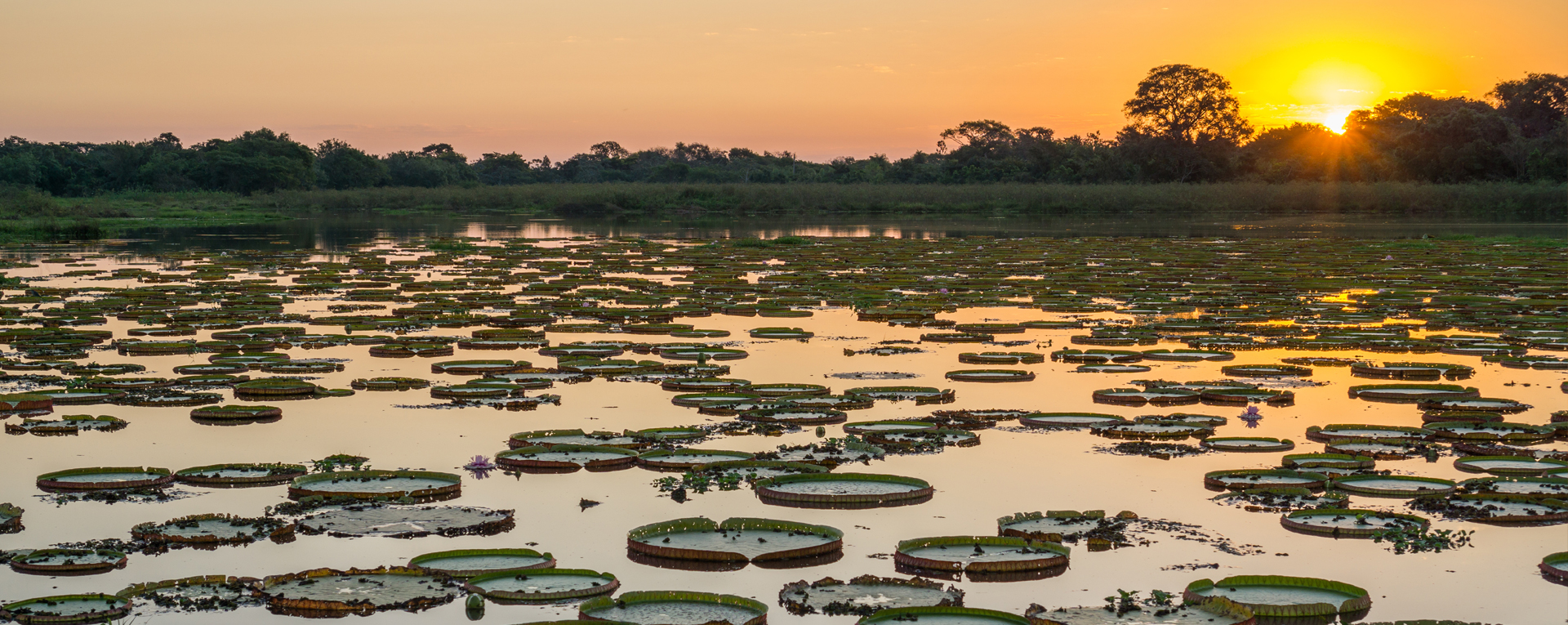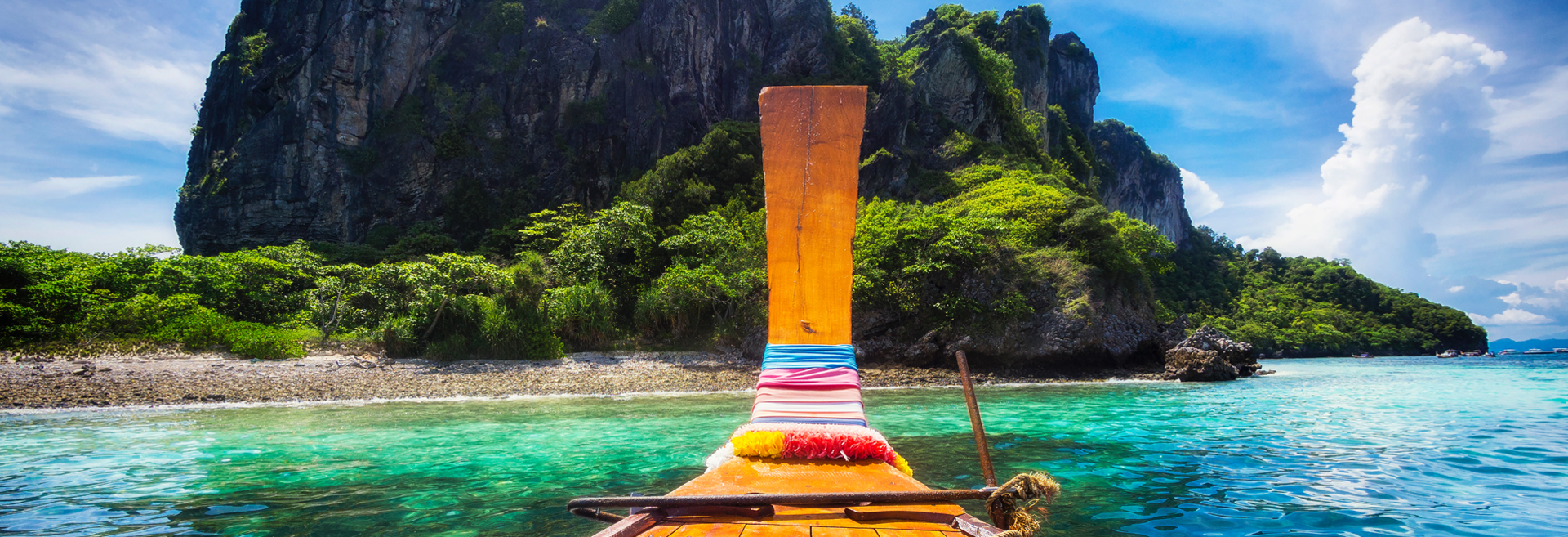One of the most common things to hear from clients when discussing itineraries to South America and especially Brazil is ‘I want to go to the Amazon for the wildlife’.
[caption id="attachment_875" align="aligncenter" width="960"]
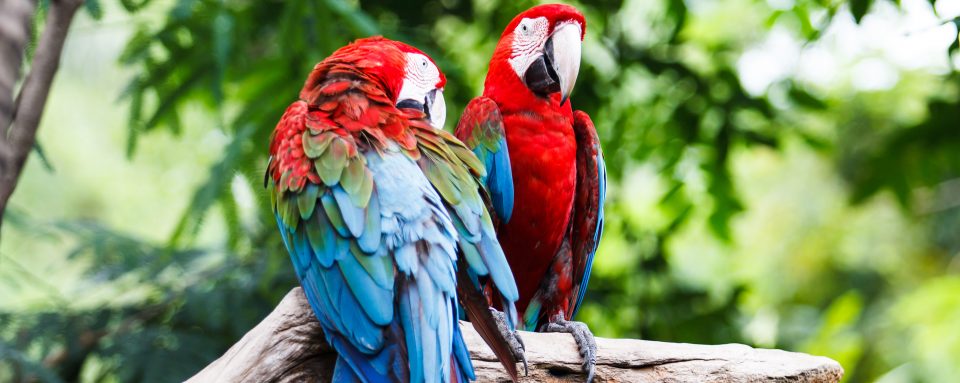
Blue and Red Macaw in the Amazon[/caption]
Countless news stories, wildlife documentaries and travel blogs have painted the rainforest as a must visit destination for wildlife enthusiasts and in many ways rightly so. This is after all one of the most ecologically diverse regions on the planet, teaming with all manner of fauna, from Jaguar to hummingbirds. There is just one small issue with the Amazon – there is an awful lot of vegetation between you and the wildlife you are trying to spot. Trips to the Amazon are great, you are likely to see a pretty good haul of wildlife, and the enormity of the expanse of greenery is definitely well worth the visit in itself. However, people often falsely believe they are going to walk into an Attenborough-esque wildlife film, and the reality is glimpses of wildlife are often quite fleeting, amongst the near impenetrable vegetation of the jungle.
[caption id="attachment_876" align="aligncenter" width="960"]
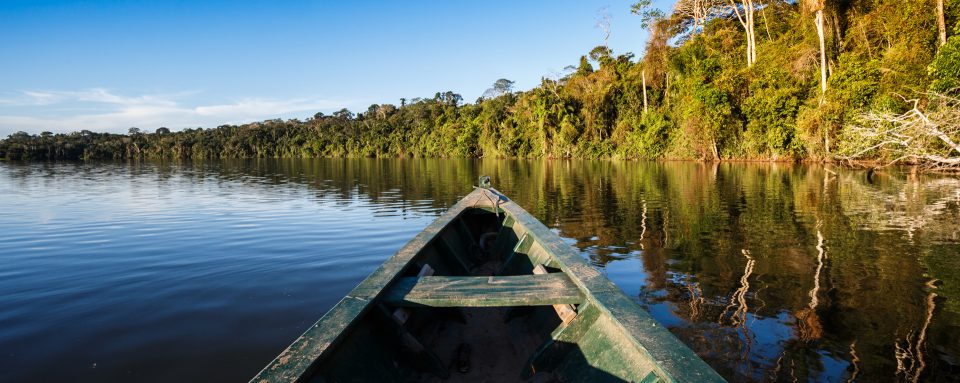
River in the Amazon[/caption]
This happily brings me on to Brazil’s Pantanal wetlands, which is where I would go if I were wanting to see Amazonian wildlife. Covering an area the size of England, the Pantanal stretches from the heart of Brazil all the way to the borders of Bolivia, Paraguay and Argentina. This is the world’s largest wetland, home to an incredible array of species, most of which are also endemic to the Amazon. However, the vegetation is much sparser here and therefore the wildlife is much easier to spot.
My first foray into the Amazon in Peru saw my guide excitedly point out Capybara (the world’s largest rodent and South American icon) on the banks of the river, it was an incredible find and we spent ages watching them. Upon arrival into the Pantanal my guide picked me up from the airport and as we passed our first Capybara I was quite surprised that the guide neither stopped or really deviated from our drive – I was a little concerned as I was supposed to be heading towards a dedicated wildlife lodge. It quickly became obvious that this apparent lack of interest was well founded, as we passed group after group after group of Capybara along the road and then, when we reached the lodge, I found myself stepping around a family of them enjoying their afternoon nap as we approached reception. I would not stop a drive to look at a cow in the UK, so should it come as any surprise that the sheer number of Capybara engenders a certain level of nonchalance towards them amongst the Pantanal natives. This was where I really began to understand how incredible the Pantanal is for wildlife enthusiasts.
[caption id="attachment_877" align="aligncenter" width="960"]
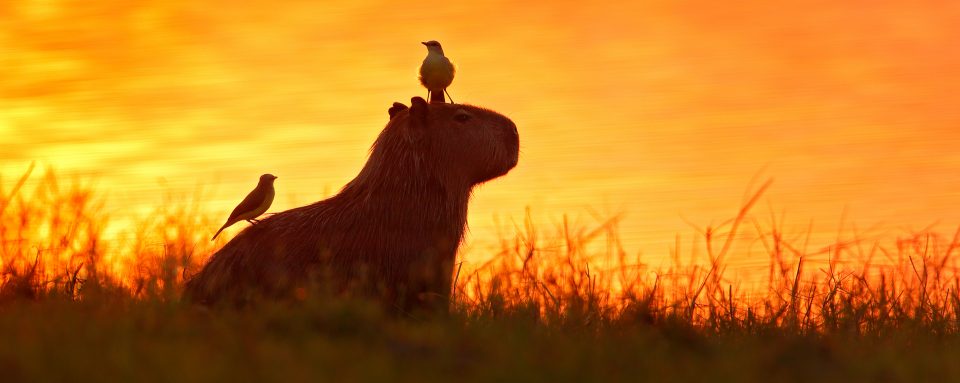
Capybara[/caption]
I spent 5 nights in total in the Amazon, and aside from Capybara I saw Caiman and a distant Harpy Eagle. After 3 nights in the Pantanal my Amazonian wildlife spotters guide had swelled to include, Jabiru Stork, Scarlet Macaws, Hyacinth Macaws, Howler Monkeys, Capuchin Monkeys, Rhea and Giant River Otters, not to mention a Marsh Deer peering into my window one morning. This really is a wildlife spotters dream and that is before we even mention the apex predator and daddy of Amazonian wildlife spotting – the Jaguar. Although I sadly did not see a Jaguar, the fact remains that the Pantanal is the best place in the world to see Jaguar in the wild. At the right lodge, and at the right time of year there is around an 80% chance you will be able to spot this incredible feline.
[caption id="attachment_878" align="aligncenter" width="960"]
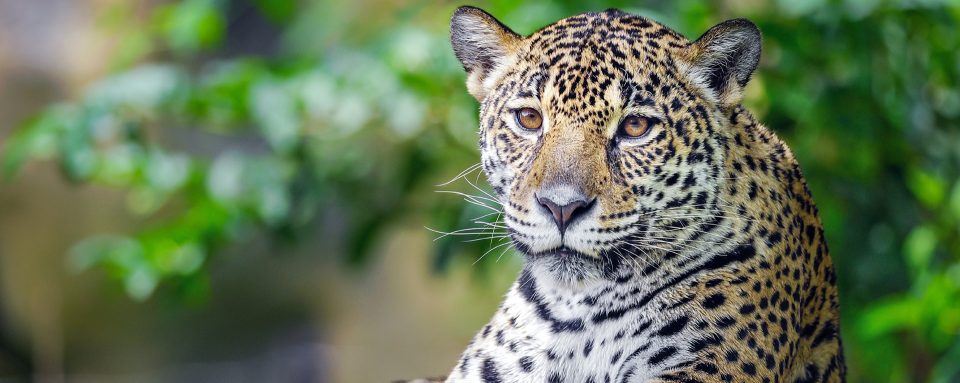
Jaguar[/caption]
Accessed from a couple of gateway airports in Brazil, Cuiaba and Campo Grande, the Pantanal does require a certain amount of dedication to get to. Both airports are a good couple of hours flight away from places like Rio and Iguacu and once at the airport you are usually faced with a 3-4 hour drive to get to your lodge. For those who make the trip however, spending 3 or 4 nights in the area is almost guaranteed to be filled with wildlife. Visit during the dry season for the best chances to see wildlife and especially in September and October if keen to see Jaguar. Our favourite lodge,
Caiman Ecological refuge is the perfect spot to explore the area.
[caption id="attachment_879" align="aligncenter" width="960"]
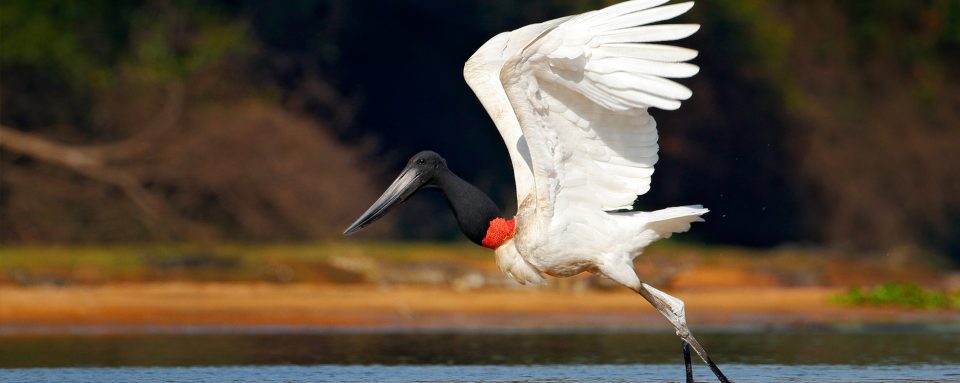
Jabiru Stork[/caption]
The Pantanal is aptly called the best wildlife destination in mainland South America and it is as if the animals know they have a reputation to live up to. That is certainly what it felt like as my driver who took me back to the airport, slowed to let the 10ft long Green Anaconda cross the road just outside the lodge.
 Blue and Red Macaw in the Amazon[/caption]
Countless news stories, wildlife documentaries and travel blogs have painted the rainforest as a must visit destination for wildlife enthusiasts and in many ways rightly so. This is after all one of the most ecologically diverse regions on the planet, teaming with all manner of fauna, from Jaguar to hummingbirds. There is just one small issue with the Amazon – there is an awful lot of vegetation between you and the wildlife you are trying to spot. Trips to the Amazon are great, you are likely to see a pretty good haul of wildlife, and the enormity of the expanse of greenery is definitely well worth the visit in itself. However, people often falsely believe they are going to walk into an Attenborough-esque wildlife film, and the reality is glimpses of wildlife are often quite fleeting, amongst the near impenetrable vegetation of the jungle.
[caption id="attachment_876" align="aligncenter" width="960"]
Blue and Red Macaw in the Amazon[/caption]
Countless news stories, wildlife documentaries and travel blogs have painted the rainforest as a must visit destination for wildlife enthusiasts and in many ways rightly so. This is after all one of the most ecologically diverse regions on the planet, teaming with all manner of fauna, from Jaguar to hummingbirds. There is just one small issue with the Amazon – there is an awful lot of vegetation between you and the wildlife you are trying to spot. Trips to the Amazon are great, you are likely to see a pretty good haul of wildlife, and the enormity of the expanse of greenery is definitely well worth the visit in itself. However, people often falsely believe they are going to walk into an Attenborough-esque wildlife film, and the reality is glimpses of wildlife are often quite fleeting, amongst the near impenetrable vegetation of the jungle.
[caption id="attachment_876" align="aligncenter" width="960"] River in the Amazon[/caption]
This happily brings me on to Brazil’s Pantanal wetlands, which is where I would go if I were wanting to see Amazonian wildlife. Covering an area the size of England, the Pantanal stretches from the heart of Brazil all the way to the borders of Bolivia, Paraguay and Argentina. This is the world’s largest wetland, home to an incredible array of species, most of which are also endemic to the Amazon. However, the vegetation is much sparser here and therefore the wildlife is much easier to spot.
My first foray into the Amazon in Peru saw my guide excitedly point out Capybara (the world’s largest rodent and South American icon) on the banks of the river, it was an incredible find and we spent ages watching them. Upon arrival into the Pantanal my guide picked me up from the airport and as we passed our first Capybara I was quite surprised that the guide neither stopped or really deviated from our drive – I was a little concerned as I was supposed to be heading towards a dedicated wildlife lodge. It quickly became obvious that this apparent lack of interest was well founded, as we passed group after group after group of Capybara along the road and then, when we reached the lodge, I found myself stepping around a family of them enjoying their afternoon nap as we approached reception. I would not stop a drive to look at a cow in the UK, so should it come as any surprise that the sheer number of Capybara engenders a certain level of nonchalance towards them amongst the Pantanal natives. This was where I really began to understand how incredible the Pantanal is for wildlife enthusiasts.
[caption id="attachment_877" align="aligncenter" width="960"]
River in the Amazon[/caption]
This happily brings me on to Brazil’s Pantanal wetlands, which is where I would go if I were wanting to see Amazonian wildlife. Covering an area the size of England, the Pantanal stretches from the heart of Brazil all the way to the borders of Bolivia, Paraguay and Argentina. This is the world’s largest wetland, home to an incredible array of species, most of which are also endemic to the Amazon. However, the vegetation is much sparser here and therefore the wildlife is much easier to spot.
My first foray into the Amazon in Peru saw my guide excitedly point out Capybara (the world’s largest rodent and South American icon) on the banks of the river, it was an incredible find and we spent ages watching them. Upon arrival into the Pantanal my guide picked me up from the airport and as we passed our first Capybara I was quite surprised that the guide neither stopped or really deviated from our drive – I was a little concerned as I was supposed to be heading towards a dedicated wildlife lodge. It quickly became obvious that this apparent lack of interest was well founded, as we passed group after group after group of Capybara along the road and then, when we reached the lodge, I found myself stepping around a family of them enjoying their afternoon nap as we approached reception. I would not stop a drive to look at a cow in the UK, so should it come as any surprise that the sheer number of Capybara engenders a certain level of nonchalance towards them amongst the Pantanal natives. This was where I really began to understand how incredible the Pantanal is for wildlife enthusiasts.
[caption id="attachment_877" align="aligncenter" width="960"] Capybara[/caption]
I spent 5 nights in total in the Amazon, and aside from Capybara I saw Caiman and a distant Harpy Eagle. After 3 nights in the Pantanal my Amazonian wildlife spotters guide had swelled to include, Jabiru Stork, Scarlet Macaws, Hyacinth Macaws, Howler Monkeys, Capuchin Monkeys, Rhea and Giant River Otters, not to mention a Marsh Deer peering into my window one morning. This really is a wildlife spotters dream and that is before we even mention the apex predator and daddy of Amazonian wildlife spotting – the Jaguar. Although I sadly did not see a Jaguar, the fact remains that the Pantanal is the best place in the world to see Jaguar in the wild. At the right lodge, and at the right time of year there is around an 80% chance you will be able to spot this incredible feline.
[caption id="attachment_878" align="aligncenter" width="960"]
Capybara[/caption]
I spent 5 nights in total in the Amazon, and aside from Capybara I saw Caiman and a distant Harpy Eagle. After 3 nights in the Pantanal my Amazonian wildlife spotters guide had swelled to include, Jabiru Stork, Scarlet Macaws, Hyacinth Macaws, Howler Monkeys, Capuchin Monkeys, Rhea and Giant River Otters, not to mention a Marsh Deer peering into my window one morning. This really is a wildlife spotters dream and that is before we even mention the apex predator and daddy of Amazonian wildlife spotting – the Jaguar. Although I sadly did not see a Jaguar, the fact remains that the Pantanal is the best place in the world to see Jaguar in the wild. At the right lodge, and at the right time of year there is around an 80% chance you will be able to spot this incredible feline.
[caption id="attachment_878" align="aligncenter" width="960"] Jaguar[/caption]
Accessed from a couple of gateway airports in Brazil, Cuiaba and Campo Grande, the Pantanal does require a certain amount of dedication to get to. Both airports are a good couple of hours flight away from places like Rio and Iguacu and once at the airport you are usually faced with a 3-4 hour drive to get to your lodge. For those who make the trip however, spending 3 or 4 nights in the area is almost guaranteed to be filled with wildlife. Visit during the dry season for the best chances to see wildlife and especially in September and October if keen to see Jaguar. Our favourite lodge, Caiman Ecological refuge is the perfect spot to explore the area.
[caption id="attachment_879" align="aligncenter" width="960"]
Jaguar[/caption]
Accessed from a couple of gateway airports in Brazil, Cuiaba and Campo Grande, the Pantanal does require a certain amount of dedication to get to. Both airports are a good couple of hours flight away from places like Rio and Iguacu and once at the airport you are usually faced with a 3-4 hour drive to get to your lodge. For those who make the trip however, spending 3 or 4 nights in the area is almost guaranteed to be filled with wildlife. Visit during the dry season for the best chances to see wildlife and especially in September and October if keen to see Jaguar. Our favourite lodge, Caiman Ecological refuge is the perfect spot to explore the area.
[caption id="attachment_879" align="aligncenter" width="960"] Jabiru Stork[/caption]
The Pantanal is aptly called the best wildlife destination in mainland South America and it is as if the animals know they have a reputation to live up to. That is certainly what it felt like as my driver who took me back to the airport, slowed to let the 10ft long Green Anaconda cross the road just outside the lodge.
Jabiru Stork[/caption]
The Pantanal is aptly called the best wildlife destination in mainland South America and it is as if the animals know they have a reputation to live up to. That is certainly what it felt like as my driver who took me back to the airport, slowed to let the 10ft long Green Anaconda cross the road just outside the lodge.




